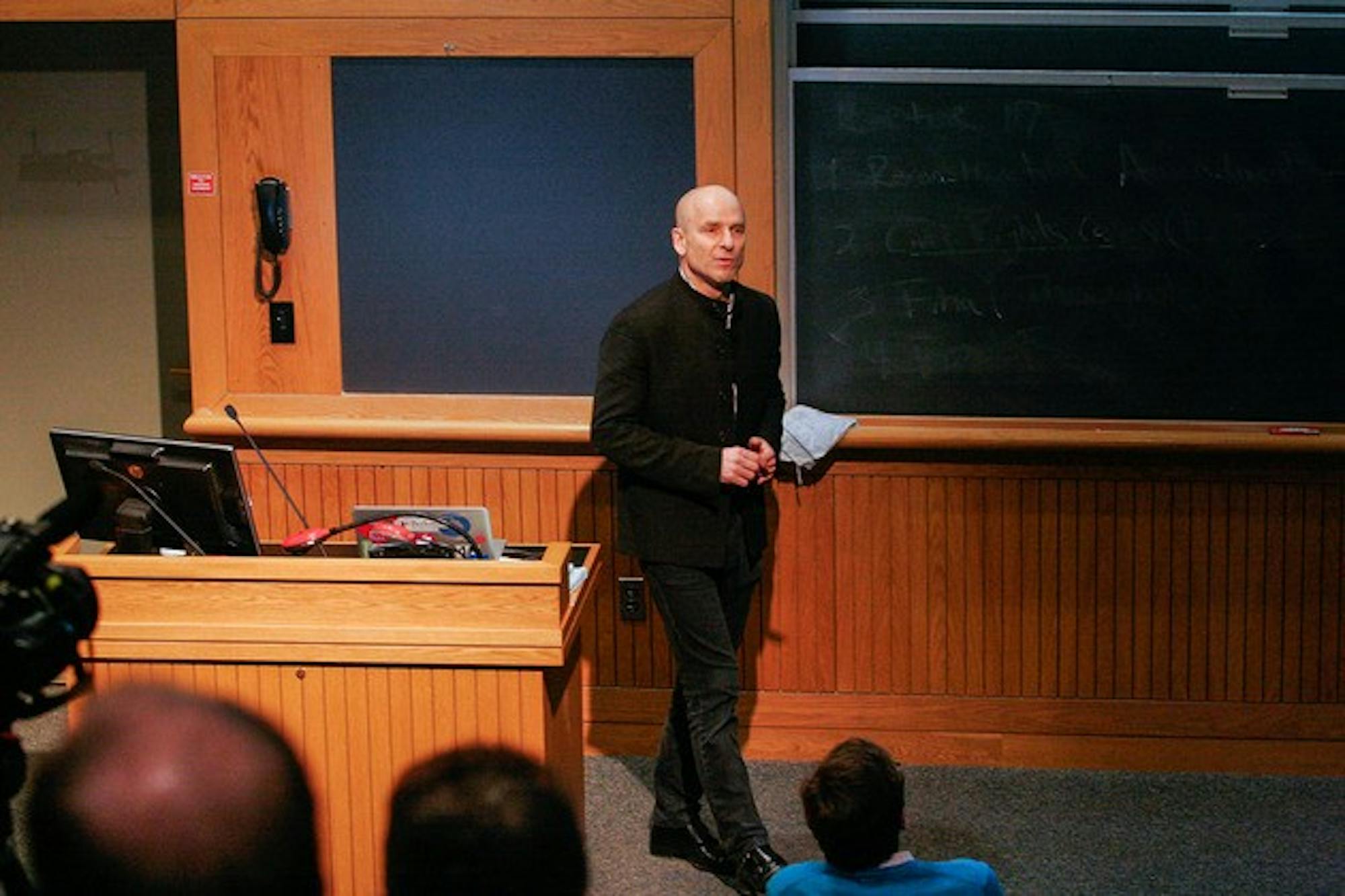Schnapp, who served as a professor in the College's French and Italian department from 1983 to 1985, argued that, by offering new ways to create and disseminate knowledge, digital technologies have the power to change the way scholars study the humanities.
Dartmouth integrated a state-of-the-art email system into its culture in the 1980s, well before other schools started embracing the technology.
Schnapp said the College's digital environment nurtured his interest in exploring the relationship between the digital arts and the humanities. He collaborated on the Dartmouth Dante Project, an effort to combine commentaries on the Divine Comedy into a database that would allow easier access to Dante's works.
Digital humanities is not just about "producing humanists that can code Java," he said. Instead, it uses diverse research methods and disciplines to create knowledge.
"In a post-print world, the forms of scholarship are no longer reducible to the scholarly monograph," he said.
Digital humanities involves experimentation with new genres and places special focus on collaboration to create new information. The rise in media scholarship has helped expand the realm of humanities to include visual, sound and textual aspects, bringing scholarly work outside of the research library bookshelf, he said.
Schnapp spoke about Harvard's Metalab, a research and teaching unit dedicated to investigating the frontiers of networked culture in the arts and humanities, of which he is the faculty director.
Zeega, a coding project through the Metalab started by Harvard graduate students in 2009, focuses on creating an interactive multimedia storytelling platform. Zeega users can produce, collect and share open application interfaces, he said.
Another project, called "Library Test Kitchen Site," focuses on envisioning a new library space by integrating physical and digital collections.
The project's efforts include attaching new radio-frequency identification tags to books to facilitate tracking, and redesigning library furniture, such as the reference desk, to accommodate digital technology that helps libraries become a hybrid learning area.
Schnapp also suggested creating library "cold spots," where students can work without access to the web. They could create off-the-grid networks that offer a respite from the over-wired world.
"These are simply demonstrations of opportunities that will open up rich practices for humanists," Schnapp said.
Schnapp discussed experimental book projects to reimagine academic works through digital media. New scholarly projects would replace traditional print essays that typically focus on a single subject and include many "micro-arguments" that incorporate visual elements, making the work engaging and easier to use.
"You take a print artifact, deconstruct it and make it into something else," Schnapp said. "People can take away what they want from it. It's a remix culture and makes books sexy."
Waritorn Chariyawattanarut '14 attended the lecture to learn what changes he might see in academia.
"Information is all over the place at the library, and I was interested how information would be organized in the future," he said.
Chariyawattanarut said he is especially interested in the "cold spot" system and will propose the idea to his coworkers at Feldberg Business and Engineering Library.




